This past November two friends and I embarked on the Three Passes Trek, a hiking trail through Nepal that crosses, you guessed it, three mountain passes. The trail experiences drastic elevation changes, ranging anywhere from 9,000 to 17,500 feet. On Day 12 of our travels, I was struggling to fall asleep in Gorakshep, a small village located 17,000 feet in elevation near the base camp of Mount Everest. In addition to a massive headache, I felt disoriented and was having trouble breathing. Textbook symptoms for acute mountain sickness (AMS). It was obvious that my body was still acclimatizing to the staggering elevations.
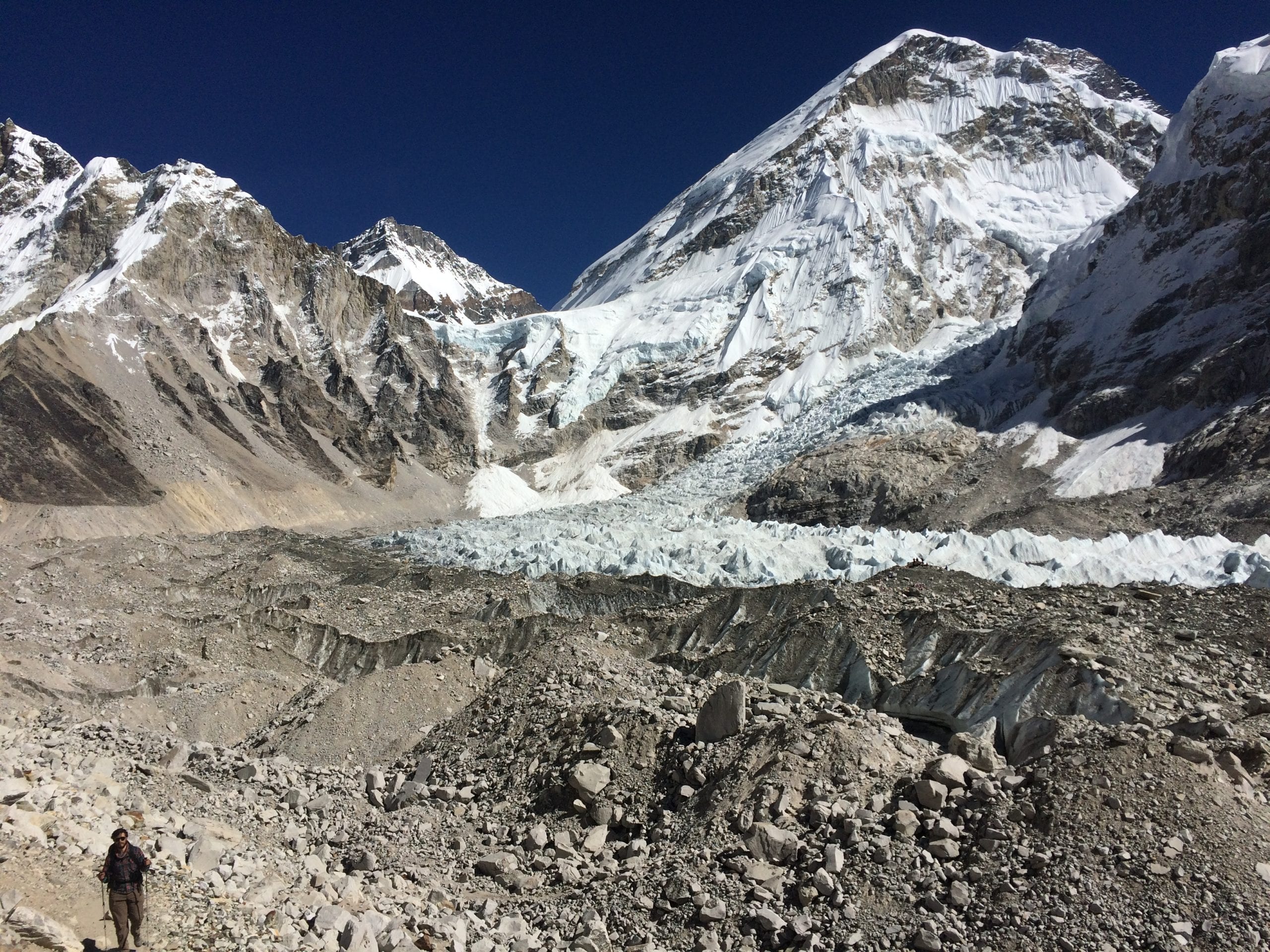
Acclimatization is the process of adjusting to changes in a new environment in order to maintain function and performance. In Nepal our bodies needed to acclimatize to the new environment (i.e. thin air with little oxygen) in order to travel safely throughout the region. As we all know, the human body breathes air in order to function properly. Breathing air brings oxygen into our lungs where it then passes into the bloodstream and is carried by red blood cells to various locations throughout the body. However, air pressure decreases as elevation increases. This means the air at higher altitudes is less dense and air molecules are farther apart, decreasing the amount of oxygen that is available to breathe. For instance, at 0 feet in elevation (sea level) 100% of the oxygen in the air is available to breathe. That percentage drops to 84% at 5,000 feet, 70% at 10,000 feet, and so on. On top of Mt. Everest at 29,029 feet there is only 33% available oxygen in the air!
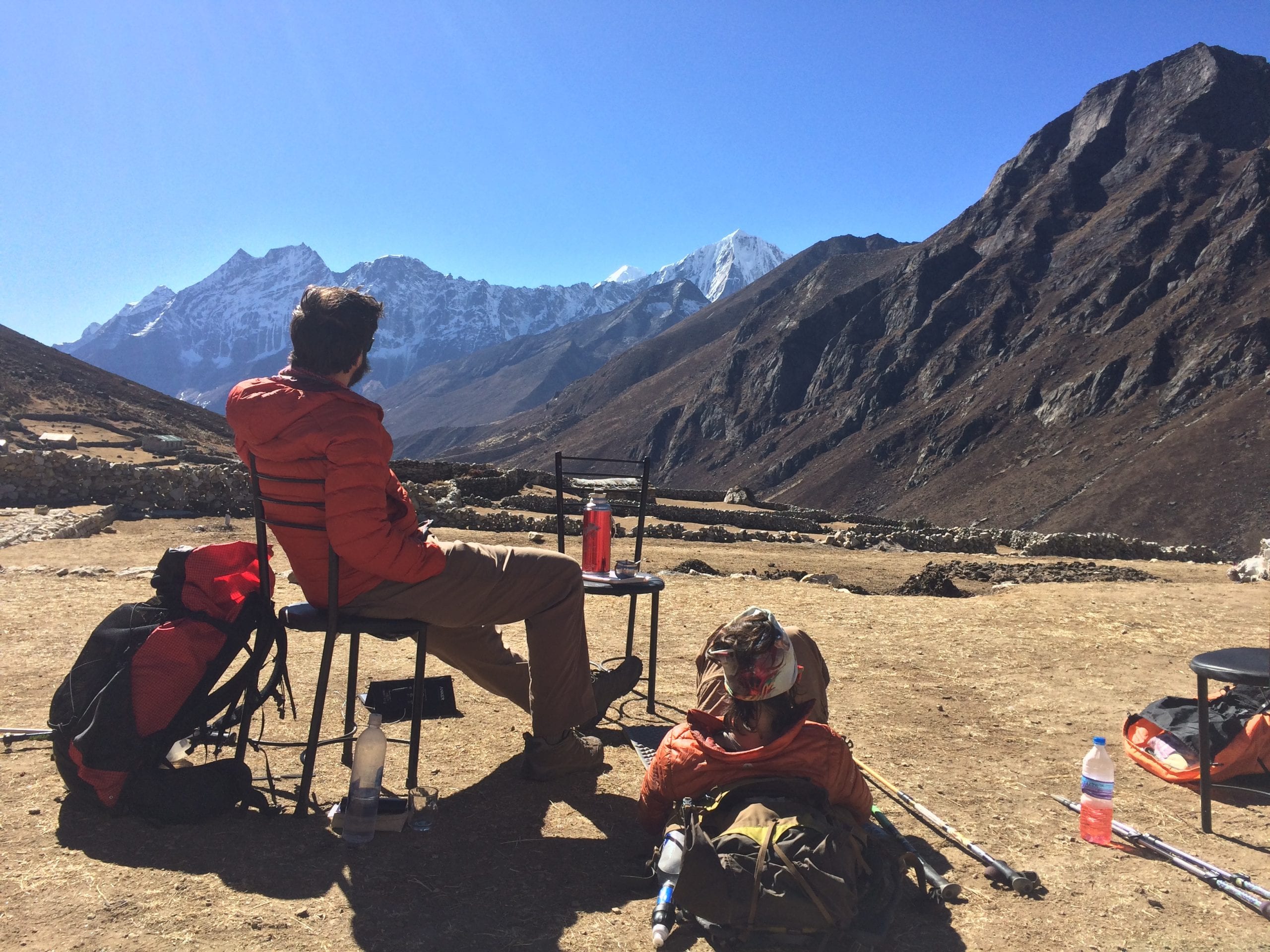
After a brief yet nerve-wracking flight in a tiny plane from Kathmandu to Lukla, we started the Three Passes Trek at 9,000 feet in elevation. Coming from Athens, GA which is essentially at sea level, this means we experienced a 27% reduction in available oxygen on Day One. Our bodies were now deprived of their normal levels of oxygen, and thus underwent some immediate physiological responses. Our breathing deepened and became more frequent in order to get the same amount of oxygen we were accustomed to, which resulted in shortness of breath, dizziness and tiredness. In addition, our heart rates and blood pressures increased in order to get the limited oxygen into the bloodstream and moving throughout the body, which resulted in headaches and feelings of confusion. The result of these initial physiological responses to acclimatization are the symptoms of AMS.
After the first week acclimatizing to the new altitudes, these symptoms disappeared as our bodies underwent more efficient physiological responses. Our lung capacities and lung expansion capabilities increased, which resulted in the increased uptake of oxygen from the “thinner†air. Our bodies also increased the production of red blood cells and capillaries, which resulted in the enhanced transportation of oxygen throughout the body. The increased uptake and circulation of oxygen throughout the body alleviated our AMS: we were no longer short of breath, we no longer had headaches, dizziness or feelings of confusion, and we began to feel more well rested.
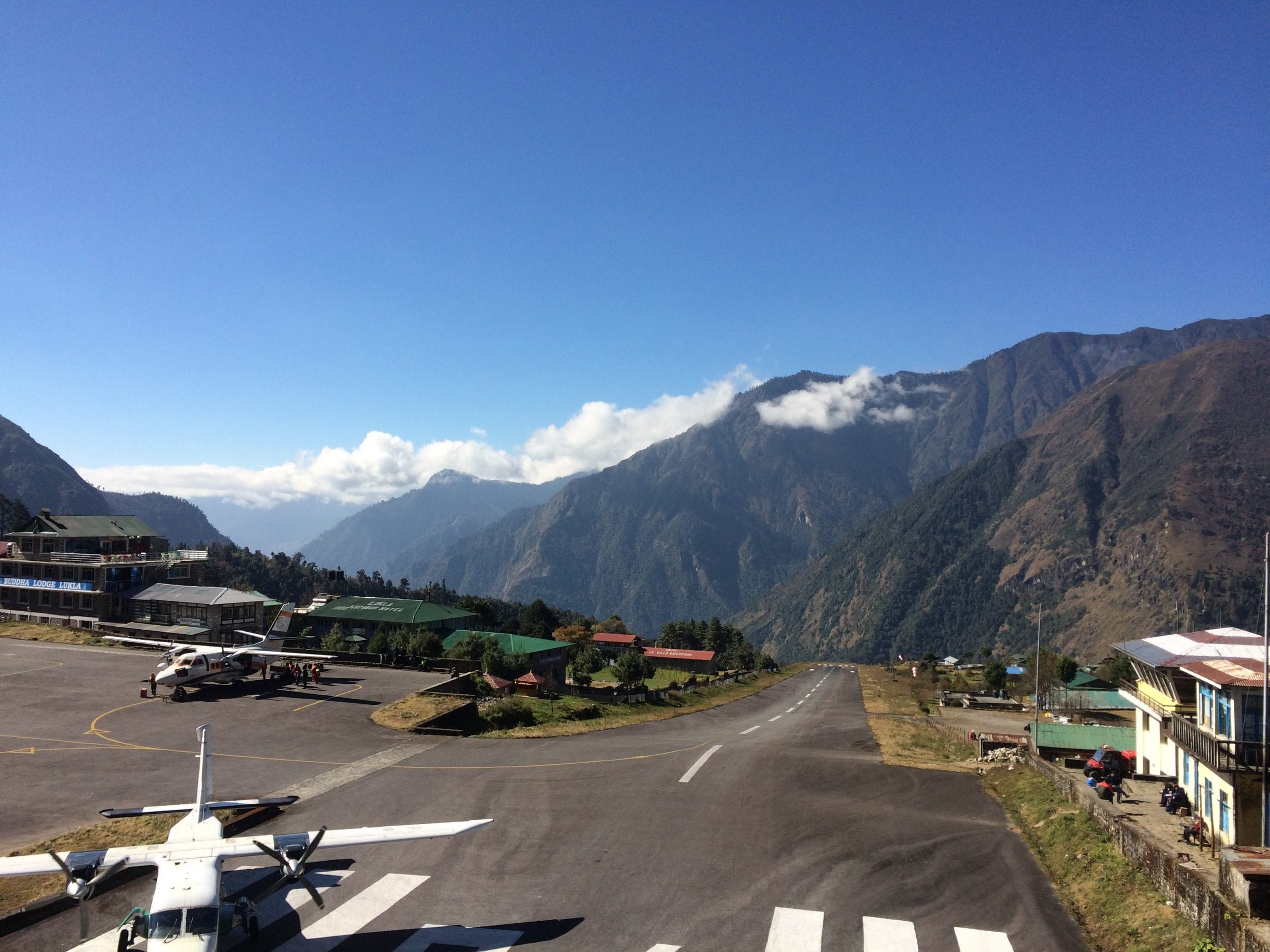
Without adequate time for acclimatization, trekkers might develop more serious manifestations of altitude sickness. High-altitude pulmonary edema (HAPE), the buildup of fluid in the lungs, and high-altitude cerebral edema (HACE), the buildup of fluid on the brain, are both potentially fatal without proper medical attention. During our trip we witnessed countless helicopter rescues for trekkers experiencing these severe forms of altitude sickness. These helicopters were returning trekkers to lower altitudes, and more readily available oxygen, as rapidly as possible to alleviate their symptoms.
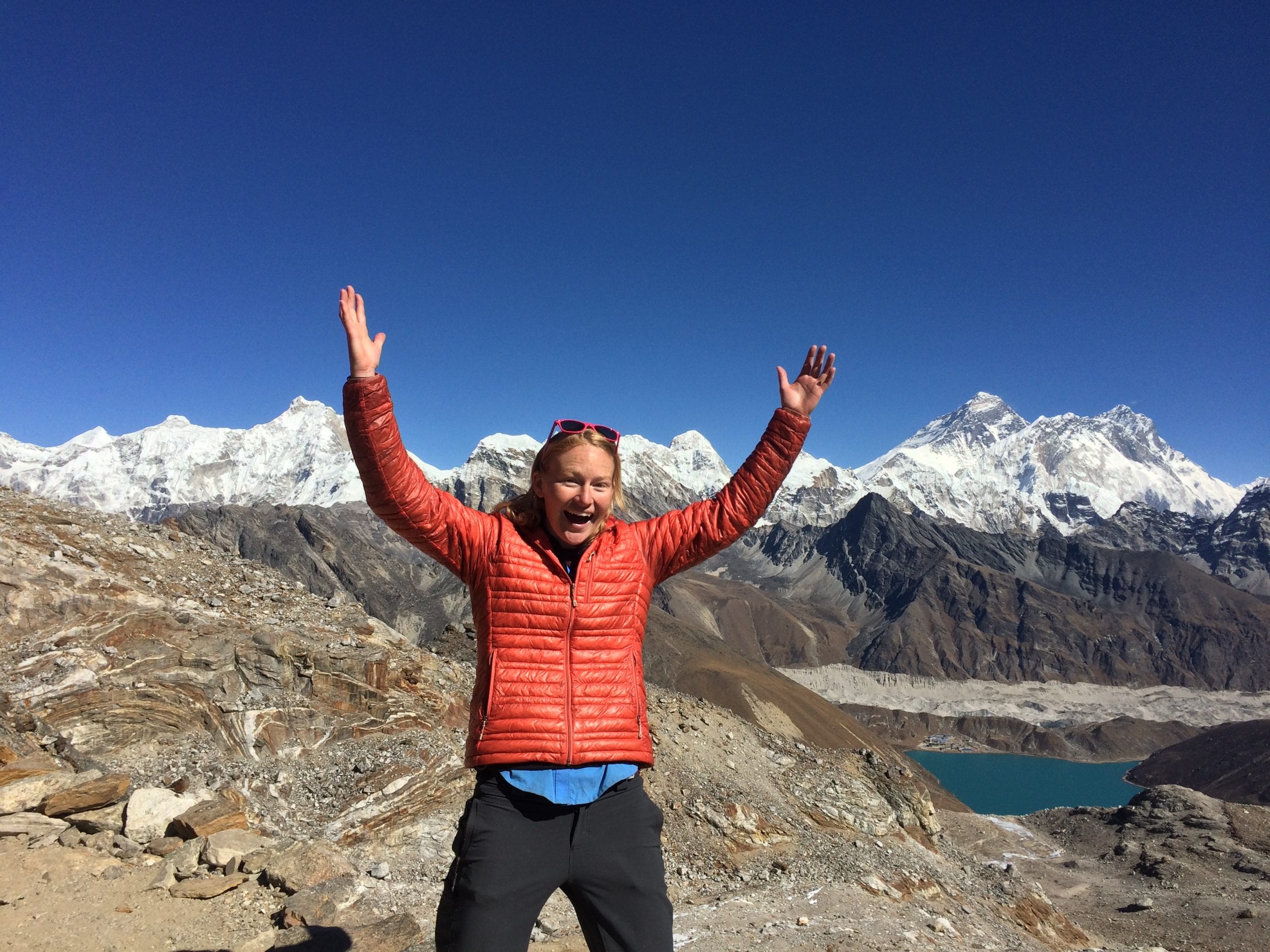
As a quick aside (maybe a second blog will address this concept in more detail…), there is a very real difference between acclimatization and adaptation. The local Nepalese people are more genetically suited to endure the physiological stresses of high altitude due to generations of their ancestors living at high elevations, and thousands of years of natural selection and adaptation. But thanks to acclimatization, we had the journey of a lifetime; we were able to safely travel through the amazing Everest region and experience what life is like for the local Nepalese.
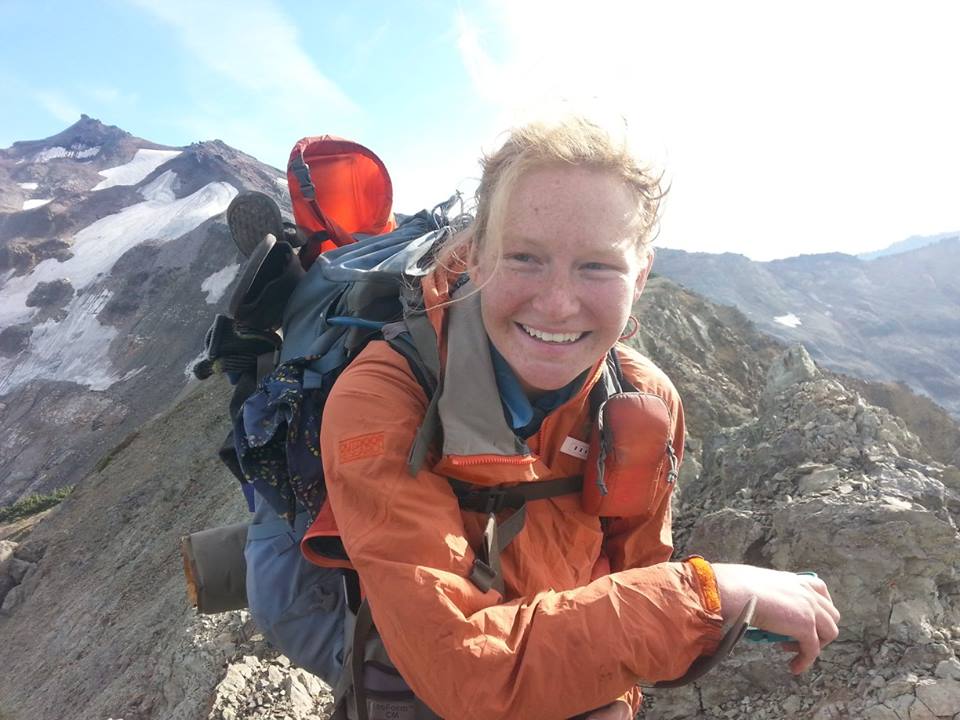 Kelly Kerr is a research assistant in the Plant Biology department at UGA investigating stress physiology in sunflowers. Her research interests include forest ecophysiology, and she is passionate about maintaining resilient forest ecosystems under climate change. She enjoys nearly all forms of outdoor recreation, so you'll probably find her around town trail running, mountain biking or at the climbing gym. Get in touch with Kelly at klkerr86@gmail.com. More from Kelly Kerr.
Kelly Kerr is a research assistant in the Plant Biology department at UGA investigating stress physiology in sunflowers. Her research interests include forest ecophysiology, and she is passionate about maintaining resilient forest ecosystems under climate change. She enjoys nearly all forms of outdoor recreation, so you'll probably find her around town trail running, mountain biking or at the climbing gym. Get in touch with Kelly at klkerr86@gmail.com. More from Kelly Kerr.
About the Author
- athenssciencecafehttps://athensscienceobserver.com/author/athenssciencecafe/April 17, 2020
- athenssciencecafehttps://athensscienceobserver.com/author/athenssciencecafe/April 12, 2020
- athenssciencecafehttps://athensscienceobserver.com/author/athenssciencecafe/April 3, 2020
- athenssciencecafehttps://athensscienceobserver.com/author/athenssciencecafe/March 30, 2020







